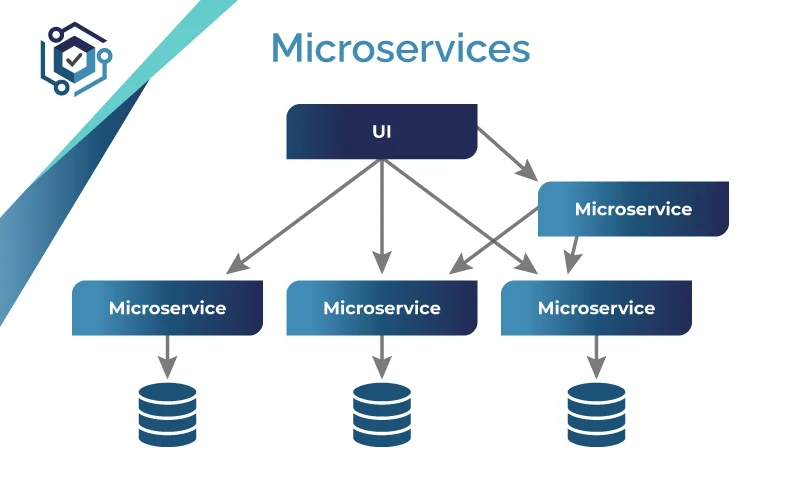Microservices architecture is an approach to software development that has gained popularity in recent years. It’s an approach to building applications that divides the software into small independent units, known as microservices, which communicate with each other over a network. This architecture enables developers to build applications more efficiently, scalably, and flexibly, and it’s especially useful in the development of complex enterprise applications.
In this post, we’ll discuss this architecture, highlighting its functioning, advantages, challenges, and steps to implement it, so you can determine if it could fit into the development of your digital product.
How does microservices architecture work?
Microservices architecture is based on the idea of breaking down an application into small independent services, each of which runs in its own process and communicates with other services through an API. Each microservice is designed to perform a specific task and can be scaled independently from the rest of the application.
This division into independent services has several advantages. Firstly, microservices are easier to maintain and update, as developers can work on a service without affecting others. Secondly, microservices can scale independently, meaning resources can be added or removed as needed without affecting the rest of the application.
Thirdly, microservices are more flexible than traditional monolithic applications, as developers can add new services without having to change the entire system. This allows businesses to add new functionalities more quickly and efficiently.
When is it used?
It’s ideal to use this architecture if you have a medium or large team that can work in a distributed manner. If the team is small, implementing microservices might become complex. Likewise, for an application that needs to scale, the microservices architecture is the most suitable choice.
What are the challenges of microservices architecture?
- Complexity. Microservices architecture is more complex than traditional monolithic applications; developers need to design and maintain multiple services.
- Integration. It requires careful planning and coordination to ensure that different services integrate correctly. If services don’t communicate properly, performance and functionality issues may arise.
- Monitoring. Microservices architecture needs constant monitoring to ensure that services are functioning correctly. If one service fails, it can affect other services and the application as a whole.
- Security. It can present some security challenges since each service has its own API and can be vulnerable to attacks. Developers need to ensure appropriate security measures are implemented for each service.
How to implement this architecture?
Implementing a microservices architecture requires careful planning and coordination. Here are some steps you can follow to implement a microservices architecture:
- Identifying the services. The first step is to identify the services that will compose the application. Each service should be independent and designed to perform a specific task.
- Designing communication. Once services are identified, it’s important to design how they will communicate with each other. Each service should have a clear and well-defined API for other services to interact with.
- Implementing infrastructure. The infrastructure should be designed to support the microservices architecture. This may include the use of containers, container orchestrators, and API management tools.
- Developing the services. Each service should be developed and tested independently. Ensuring each service has a high level of quality and is designed to be scalable and flexible is crucial.
- Integrating the services. Once services are developed, it’s necessary to integrate them and test their combined functionality. Ensuring services communicate correctly and the overall application is scalable and efficient is key.
With proper planning and coordination, microservices architecture can help businesses build more efficient and scalable applications. If, after reading this article, you’ve decided that microservices architecture is the right choice for your business development, feel free to contact us. At MyTaskPanel Consulting, we can assist you.

